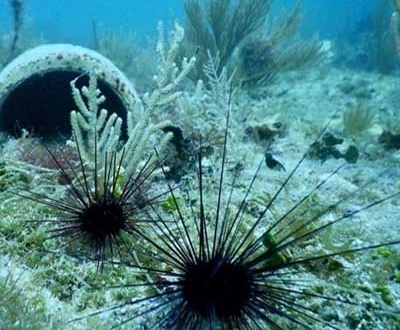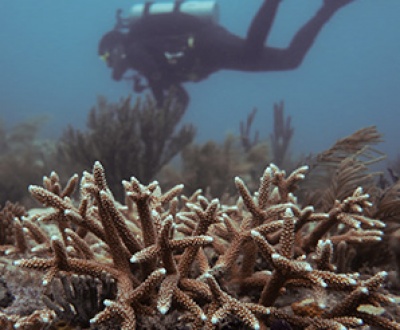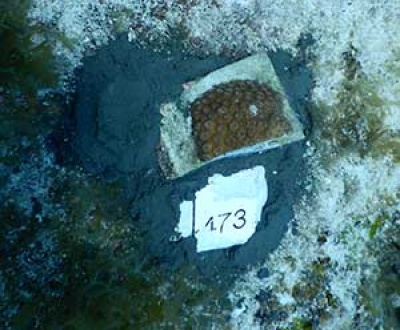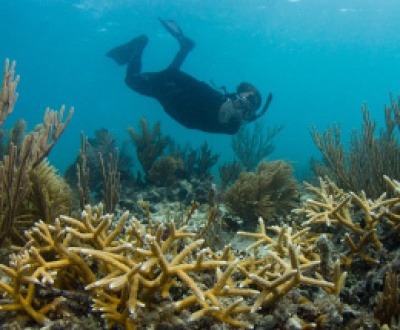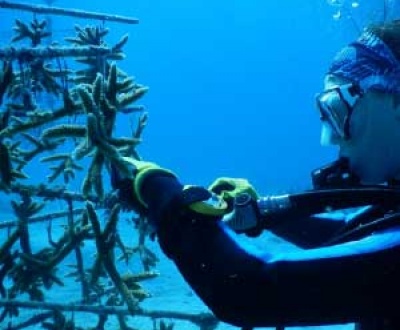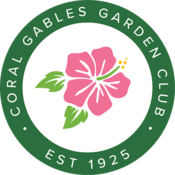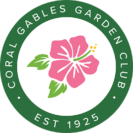Complex underwater structures called stony corals: Chapter 3
- May 27, 2021
- Diego Lirman
The field of active coral reef restoration has grown exponentially in the last 15 years and Florida has been the epicenter for the development of the last wave of reef restoration activities. In fact, many of the methods designed and tested in Florida are now being used for reef restoration around the world.
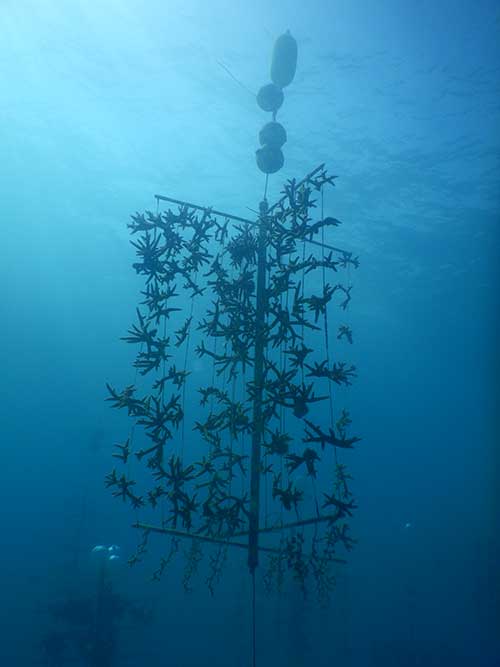
Image of a PVC tree used to grow 100 corals for restoration at the UM underwater nursery near Key Biscayne, Florida
Reef restoration using the coral gardening technique began in full force in Florida in 2009 under the leadership of the Nature Conservancy and the National Oceanographic and Atmospheric Administration (NOAA) when funding from the American Recovery and Reinvestment Act was used to bring together managers, scientists, and restoration practitioners from NOVA Southeastern University, the University of Miami, the Coral Restoration Foundation, MOTE Marine Lab, Florida’s Fish and Wildlife Commission, and the National Park Service with the common goal of propagating threatened coral species and restoring depleted Florida reefs. This partnership has grown over the last decade to the point where 10,000s of corals are now grown and planted onto degraded reefs on a yearly basis!
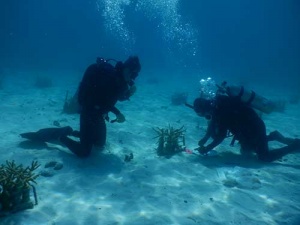
University of Miami divers measuring corals grown on cinder blocks within one of the UM underwater nurseries
Florida partners now grow >10 native coral species and 100s of distinct genotypes within in-situ (underwater) and ex-situ (on land) nurseries and facilities found from Broward County to the Dry Tortugas. My program at the University of Miami runs two in-water nurseries and also grows corals for restoration in our lab at the Rosenstiel Campus in Virginia Key, Miami. Our land-based capabilities were recently expanded with the construction of a state-of-the-science coral husbandry facility in Virginia Key run by our colleague Dr. Andrew Baker and funded by the State of Florida.
Growing corals in these facilities requires a lot of hands-on dedication but also provides unprecedented opportunities for research and student involvement. The corals grown at UM nurseries have been planted onto > 25 Miami-Dade reefs and have supported thesis research for both undergraduate and graduate students. Over the next decade we hope to become a regional hub for reef restoration science where the next generation of reef restoration practitioners can be trained.
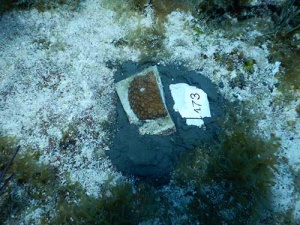
Image of a small coral fragment planted using cement showing the plastic tag used to track coral survivorship and growth over time
On a typical week, we split our time between nursery maintenance (the structures and tanks we use need a lot of cleaning to prevent algal overgrowth!) and coral planting. On good-weather days you will see our lab members diving at our coral nurseries, collecting corals, and planting these precious resources onto our coral reefs. We use very simple tools for maintenance (brushes, wire cutters) and we plant our corals using nails and plastic ties as well as a cement mix. In fact, most of the supplies we use for our reef restoration activities can be purchased at our local Home Depot! After corals have been planted, we complete a lot of monitoring to document coral survivorship and growth and to understand which coral species and genotypes do well in which habitats to guide future coral planting. Once a coral has been planted, we do not conduct any further maintenance as planted corals rapidly become part of the wild coral populations. In fact, after a few weeks, planted nursery corals grow over the nails or cement and you can’t really tell them apart from their wild counterparts.
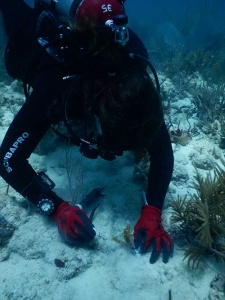
University of Miami diver planting a staghorn coral using nails and plastic cable ties
Reef restoration is very rewarding. Similar to regular gardening, people have told me they find a lot of peace and relaxation in completing simple, repetitive tasks like cleaning and pruning corals underwater. But restoration is also expensive and time-consuming. I have always said that “restoration is a numbers game,” the more corals you grow and plant, the larger the benefit and likelihood of reef recovery. Even with a dedicated team of full-time lab members, we always felt we could be doing more if we only had additional help. And that help has materialized in the form of “citizen scientists.” Citizen scientists are members of the public that, with a bit of training, can work side-by-side with our team to expand the scope of our activities and plan a lot more corals. In our next blog, I will describe the development of our Rescue a Reef citizen science program that in the last 5 years has brought 100s of members of the public into our program and has helped us plant 1000s of additional corals onto the reefs of Miami. Stay tuned!
Diego Lirman, Ph.D.
University of Miami
Email: dlirman@rsmas.miami.edu
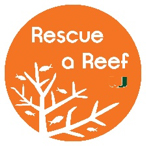
Rescue A Reef Program: rescueareef.rsmas.miami.edu
Facebook: https://www.
Twitter: https://twitter.com/
Instagram: https://www.
About the Author
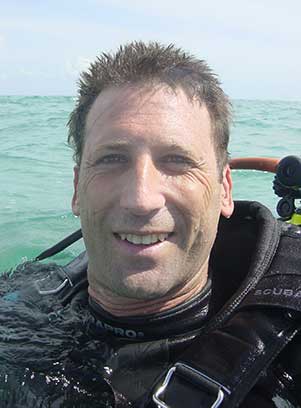
Sign up here for email notifications about new Hothouse Blog articles!
More articles on the subject
See all postsRecent Posts
- April 2023 April 1, 2024
- Good News on Environmental Plastics February 1, 2024
- Material World / Plant World January 1, 2024
Leave a Comment cancel
This site uses Akismet to reduce spam. Learn how your comment data is processed.



